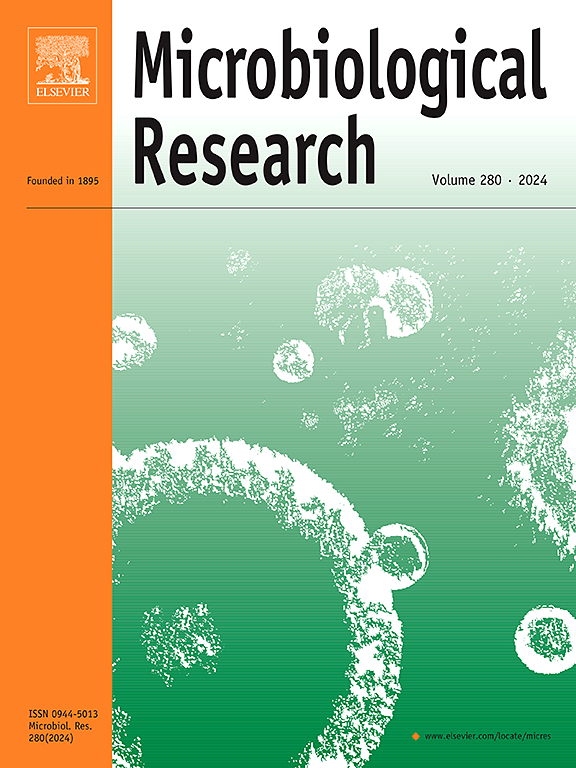桥接噬菌体生产模型及控制耐药菌的实际应用
IF 6.9
1区 生物学
Q1 MICROBIOLOGY
引用次数: 0
摘要
耐多药细菌(MDR)的出现对全球健康构成重大威胁,迫切需要制定替代治疗战略。噬菌体(噬菌体)由于其特异性、丰度和最小的副作用,作为抗生素的有希望的替代品而受到关注,在食品安全、农业、水产养殖和临床环境中具有潜在的应用前景。然而,由于细菌和噬菌体之间复杂和动态的相互作用,噬菌体治疗的实际应用受到有效生产噬菌体的挑战的限制。因此,本文旨在通过研究细菌与噬菌体的相互作用来弥合理论模型与实际应用之间的差距,重点研究细菌与噬菌体的共同进化,它们的耐药机制以及影响这些相互作用的环境因素。采用微分和随机数学模型分析了噬菌体生产的基本动力学参数,并评估了优化噬菌体生产的策略及其在控制抗生素耐药感染中的应用。此外,还提供了噬菌体-细菌动力学的数学模型,强调了结合抗生素耐药性和噬菌体耐药性之间进化权衡的新动力学模型。这些模型对影响噬菌体相互作用的因素提供了有价值的见解,并通过预测噬菌体的行为和治疗效果,帮助设计有效的治疗策略来优化噬菌体的临床应用。因此,数学建模是推进噬菌体治疗的宝贵工具。为了使噬菌体治疗成为耐多药感染的可靠解决方案,需要进一步的研究来增加噬菌体的产量和提高治疗的一致性。本文章由计算机程序翻译,如有差异,请以英文原文为准。
Bridging phage production models and practical applications to control antibiotic-resistant bacteria
The emergence of multidrug-resistant (MDR) bacteria represents a significant global health threat, demanding urgent development of alternative treatment strategies. Bacteriophages (phages) have gained attention as promising alternatives to antibiotics due to their specificity, abundance, and minimal side effects, leading to potential applications in food safety, agriculture, aquaculture, and clinical settings. However, the practical use of phage therapy is limited by challenges in efficiently producing phages, due to the complex and dynamic interactions between bacteria and phages. Therefore, this review aims to bridge the gap between theoretical models and practical applications by examining bacteria-phage interactions, focusing on the coevolution of bacteria and phages, their resistance mechanisms, and the environmental factors that influence these interactions. Differential and stochastic mathematical models were used to analyze essential kinetic parameters in phage production and to assess strategies for optimizing phage production and their application in controlling antibiotic-resistant infections. Additionally, mathematical modeling in phage-bacteria dynamics was provided, highlighting new kinetic models that incorporated the evolutionary trade-offs between antibiotic resistance and phage resistance. These models provide valuable insights into the factors that influence bacteria-phage interactions and assist in designing effective treatment strategies to optimize the clinical use of phages by predicting phage behavior and therapeutic effects. Therefore, mathematical modeling serves as an invaluable tool in advancing phage therapy. Further study is needed to increase phage production and improve therapy consistency for establishing phage therapy as a reliable solution for multidrug-resistant infections.
求助全文
通过发布文献求助,成功后即可免费获取论文全文。
去求助
来源期刊

Microbiological research
生物-微生物学
CiteScore
10.90
自引率
6.00%
发文量
249
审稿时长
29 days
期刊介绍:
Microbiological Research is devoted to publishing reports on prokaryotic and eukaryotic microorganisms such as yeasts, fungi, bacteria, archaea, and protozoa. Research on interactions between pathogenic microorganisms and their environment or hosts are also covered.
 求助内容:
求助内容: 应助结果提醒方式:
应助结果提醒方式:


